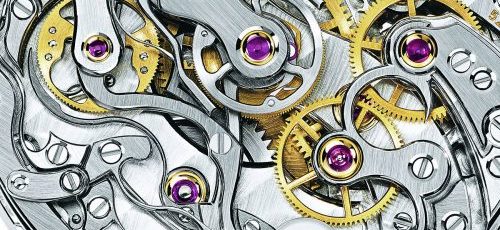What is the Purpose of Jewels in Watches? Things you must know.

Photo used are the property of respective owners.
In order to reduce friction at locations that experienced the most wear and tear, jewels or gemstones were added to watch mechanisms. Swivels and bearings can sustain significant harm when metal grazes against metal and when lubricating oil degrades. Watchmakers utilize hard stones at the points of friction because they endure a lot longer than metal and reduce tension between two metal components that grind against one another. So, to Buy Luxury watches in Dubai, or for a Pre-owned luxury Watch in Dubai, the ideal choice would be Haute Horologe.
Watchmakers had to find a material that was harder than metal in order to reduce metal-on-metal stress and strain, which led to the introduction of jewels into watch mechanisms. Diamonds, sapphires, and rubies are the only gems that are durable enough. The latter two could also be produced synthetically and were less expensive than diamonds. Because rubies and diamonds measure similarly on the Mohs scale, they are more frequently utilized. (The Mohs scale is used to assess a mineral’s relative hardness based on its susceptibility to scratching.) Today’s synthetic rubies perform the function of genuine jewels in watches pretty well. The initial creation and setting of these jewels were fairly challenging.
Most watches use jewels for both the anti-shock settings and all the technical indicators in the gear train. The number of gems constantly increased as timepieces became more intricate. Watchmakers began adorning watches with gems in locations where they weren’t really necessary as the production and setting of jewels improved and as watch industry marketing improved. Jewels were heavily advertised to give the impression that the timepieces were of a better caliber than they really were. So you can tell you’re being duped when you see timepieces with, say, 85 or so gems.
In addition to receiving an English patent, Nicolas Fatio de Duillier, Peter Debaufre, and Jacob Debaufre invented jewel bearings for use in watches back in 1704. It made a great deal of sense because many gemstones, particularly diamonds, sapphires, and rubies, that are chemically identical save for their color, are much more demanding than metal. They are also smoother than metal, which enables them to shield weak spots while promoting an initial smoother, less destructive process.
Varying movement designs necessitate different quantities of jewels, which is another factor to take into account. An automated movement will have more working parts and more jewels will be needed to lower friction.
So, if you’re looking for dazzling watches, you should check out https://www.hautehorologe.ae/.
